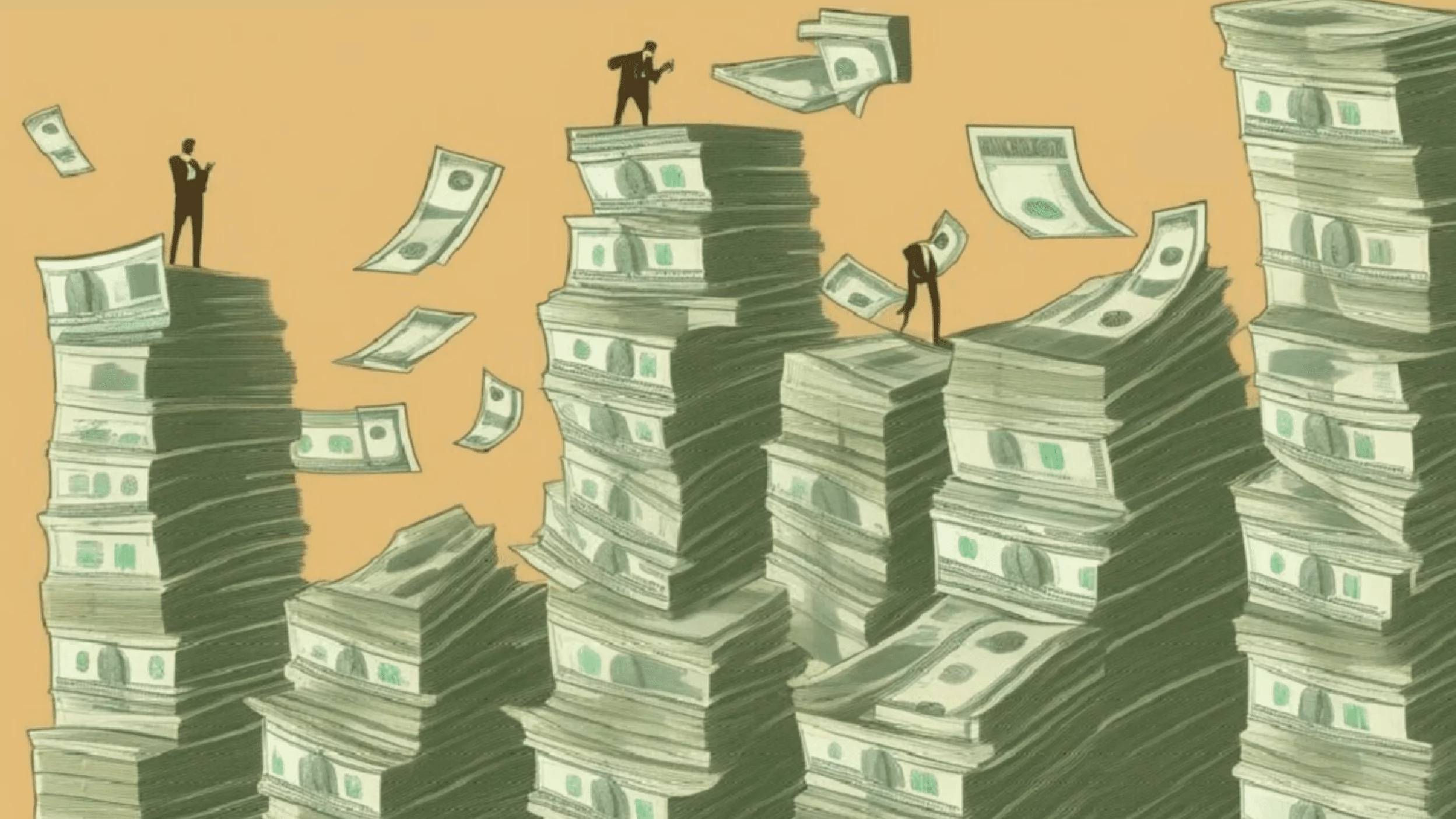China's Trade War Strategy: Obfuscating Economic Realities From America

Table of Contents
State-Sponsored Industrial Policy & Hidden Subsidies
China's state-sponsored industrial policy plays a significant role in its trade strategy. By utilizing massive government intervention, China masks the true cost of production for many industries, granting its companies an unfair competitive advantage in the global marketplace. This "hidden subsidies" approach allows Chinese firms to undercut rivals, impacting American businesses and jobs. Several industries benefit disproportionately from these practices.
-
Renewable Energy: Chinese manufacturers of solar panels and wind turbines have received substantial, often undisclosed, government support, allowing them to dominate global markets and undersell international competitors. This aggressive policy has raised concerns of dumping and unfair competition.
-
Technology: The Chinese government’s ambitious "Made in China 2025" initiative aims to dominate key technological sectors. Massive subsidies and preferential treatment for state-owned enterprises (SOEs) in areas such as artificial intelligence, semiconductors, and 5G technology fuel this drive, often at the expense of fair competition.
How these hidden subsidies are implemented:
- Subsidies disguised as loans or tax breaks: Government funds are channeled through seemingly benign financial instruments, making it difficult to quantify the actual level of support.
- Artificial suppression of input costs (e.g., land, energy): SOEs often receive land and energy at significantly reduced rates, further lowering production costs.
- State-owned enterprises dominating key sectors: SOEs are given preferential treatment, squeezing out private domestic and foreign competitors.
- Difficulty for foreign companies to compete fairly: The combined effect of these policies creates an uneven playing field, making it nearly impossible for foreign companies to compete on equal terms. This fuels accusations of "unfair competition" within the context of the US-China trade war.
Data Manipulation and Lack of Transparency
A significant aspect of China's trade war strategy is its control over data and its consequent lack of economic transparency. This deliberate obfuscation hinders accurate assessments of China’s economic strength and vulnerabilities, making it difficult for the US and other nations to effectively negotiate trade deals.
-
Restricted access to economic data: Foreign researchers and analysts often face significant restrictions when attempting to access crucial economic data, limiting independent verification of official claims.
-
Inconsistencies and potential inaccuracies in officially reported data: The data that is released often lacks consistency and raises questions about its accuracy, hindering independent analysis and fueling concerns about "data manipulation."
-
Challenges in verifying claims about economic growth and development: China's rapid economic growth is often presented without the necessary level of transparency, making it difficult to verify the sustainability and resilience of this growth.
-
Limited independent auditing of Chinese economic data: The lack of independent audits further contributes to the opacity, limiting the ability of external parties to validate official claims and creating an environment rife with mistrust. This directly impacts the ability to have transparent discussions within the context of the China trade war.
Strategic Use of Intellectual Property and Technology Transfer
China's acquisition of foreign technology has been a major point of contention in the US-China trade war. The country employs various tactics to gain access to advanced technologies, often at the expense of American businesses and innovation. These methods range from indirect pressure to outright theft.
-
Joint venture requirements forcing technology transfer: Foreign companies are often forced to share their technological know-how as a condition for operating in the Chinese market. This "forced technology transfer" has been a significant source of tension.
-
Cybertheft of intellectual property and trade secrets: State-sponsored cyberattacks are widely believed to be responsible for the theft of substantial amounts of intellectual property and trade secrets from American companies.
-
Counterfeiting and piracy of American goods and brands: The widespread counterfeiting and piracy of American goods and brands significantly undermine American businesses and innovation.
-
Weakening of US competitive advantage in key technological sectors: These aggressive tactics have resulted in a significant erosion of the US's competitive advantage in various crucial technological sectors, further exacerbating tensions within the context of the China trade war.
Opaque Financial Systems and Capital Controls
China's complex financial system, characterized by significant opacity and capital controls, contributes substantially to the overall economic obfuscation strategy. This lack of transparency makes it challenging to accurately assess the true level of financial risk associated with the Chinese economy.
-
Restrictions on capital flows in and out of China: Strict controls on the movement of capital limit external scrutiny and obscure the true nature of financial flows.
-
Opaque corporate structures and ownership: The intricate network of state-owned and privately held companies, with often unclear ownership structures, makes it difficult to understand the true financial health of many key players in the Chinese economy.
-
Limited access to information on Chinese financial institutions: The lack of readily available and reliable information on Chinese financial institutions hinders accurate risk assessments and contributes to the overall "financial opacity."
-
Difficulties in assessing the true level of Chinese debt: The lack of transparency surrounding China's debt levels makes it difficult to evaluate the country’s long-term financial stability, fueling concerns about economic risk during the China trade war.
Conclusion: Understanding China's Trade War Strategy and the Path Forward
China's trade war strategy relies heavily on obfuscating its economic realities through various methods, including state-sponsored industrial policies, data manipulation, intellectual property theft, and opaque financial systems. These tactics create an uneven playing field in international trade, undermining fair competition and posing significant challenges to the US and other trading partners. Understanding these complex strategies is crucial for developing effective countermeasures. Promoting transparency and fostering fair competition in international trade are paramount.
We must continue to analyze China's economic strategy, focusing on "analyzing China's economic strategy" and "understanding China's trade strategy," to develop effective countermeasures. Further research and analysis are essential to navigate the complexities of the US-China trade relationship and promote a more balanced global trading system. Only through comprehensive understanding of China's trade war tactics can we move towards a more equitable and transparent international marketplace.

Featured Posts
-
 Fortnite Game Mode Closures A Sign Of Shifting Priorities
May 02, 2025
Fortnite Game Mode Closures A Sign Of Shifting Priorities
May 02, 2025 -
 Check The Lotto Results For Wednesday April 16 2025
May 02, 2025
Check The Lotto Results For Wednesday April 16 2025
May 02, 2025 -
 Getting Your Free Play Station Credit Sonys Solution To Voucher Issue
May 02, 2025
Getting Your Free Play Station Credit Sonys Solution To Voucher Issue
May 02, 2025 -
 Christina Aguileras New Look Sparks Debate Over Photoshopping
May 02, 2025
Christina Aguileras New Look Sparks Debate Over Photoshopping
May 02, 2025 -
 Understanding The Landscape Of Nuclear Litigation Today
May 02, 2025
Understanding The Landscape Of Nuclear Litigation Today
May 02, 2025
Latest Posts
-
 Canelo Vs Paul How Turki Al Sheikh Cost The Fight 40 50 Million Viewers
May 05, 2025
Canelo Vs Paul How Turki Al Sheikh Cost The Fight 40 50 Million Viewers
May 05, 2025 -
 La Noche De Ufc Y Canelo Quien Ganara La Batalla Por La Audiencia Mexicana
May 05, 2025
La Noche De Ufc Y Canelo Quien Ganara La Batalla Por La Audiencia Mexicana
May 05, 2025 -
 Turki Al Sheikhs Missed Opportunity 40 50 Million Viewers Lost In Canelo Paul Fight
May 05, 2025
Turki Al Sheikhs Missed Opportunity 40 50 Million Viewers Lost In Canelo Paul Fight
May 05, 2025 -
 Ufc O Canelo La Gran Pelea Por El Dominio En Mexico
May 05, 2025
Ufc O Canelo La Gran Pelea Por El Dominio En Mexico
May 05, 2025 -
 Canelo Alvarez Vs Ufc La Batalla Por La Noche En Mexico
May 05, 2025
Canelo Alvarez Vs Ufc La Batalla Por La Noche En Mexico
May 05, 2025
